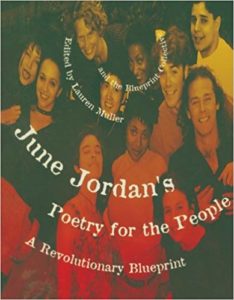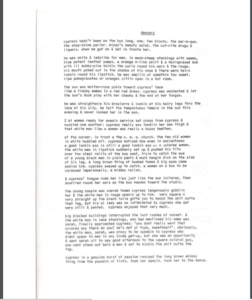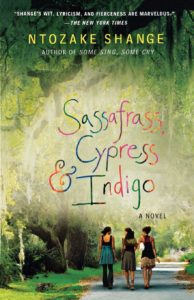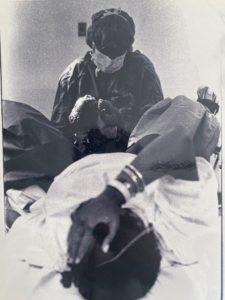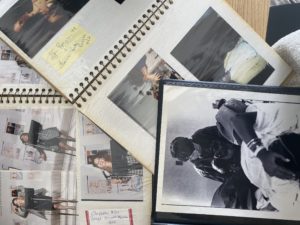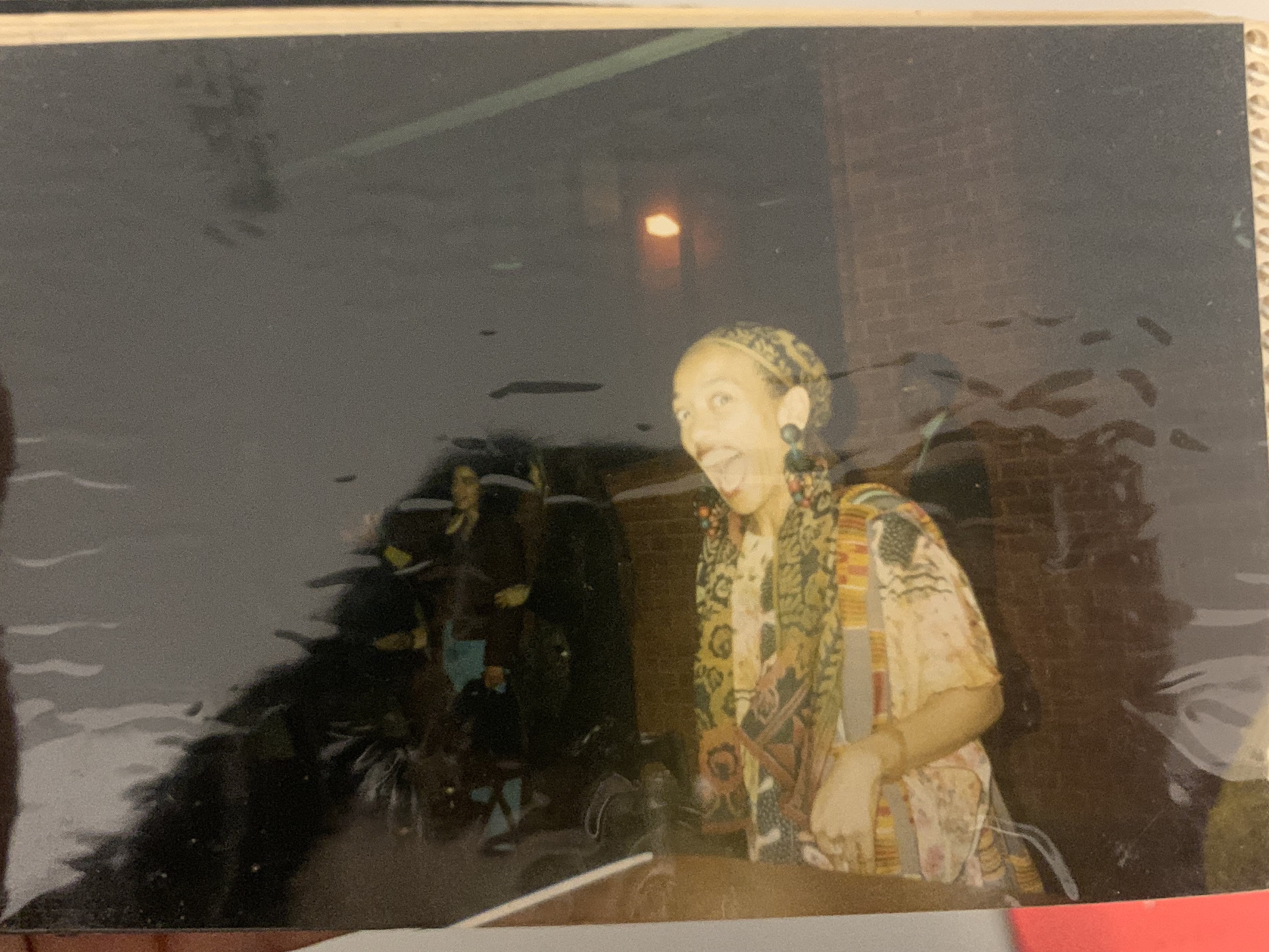Something that caught my eye upon one of my first visits to the archive was an edited draft of Shange’s “First Loves” (then called “First Love”) as a part of the early edits for Some Sing, Some Cry.
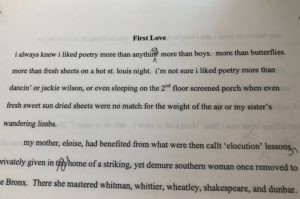
Copy of “First Love” 2009 draft with edits.
Written in prose, this piece is not itself a work of poetry, but instead an exploration of her relationship with the art as she’s grown as a writer and as a lover. This piece caught my attention because I, like Shange, “always knew I liked poetry more than anything,” but seeing the piece beyond its first line forced me to rethink my rather privileged relationship to the English language. This draft of “First Love” made me interrogate how and why Shange’s mastery of the written word looks and feels so starkly different from other poets of her time. It became clear that this is no ordinary love story — Shange’s first love was one characterized by both hardship and liberation.
“My mother, Eloise, had benefited from what were then called ‘elocution’ lessons privately given in the home of a striking yet demure Southern woman once removed to the Bronx. There she mastered Whitman, Whittier, Wheatley, Shakespeare, Dunbar, and Paul Laurence. This eclectic mix of word crafters were my lullabies, soothing rhymes, and demonstrations of slowly garnered memorization skills. This, I suspect, is where my love of poets began.”
Shange’s love is not for poetry, it’s for poets — the “word crafters” themselves. Shange’s use of the word “crafter” here is fascinating in that is suggests the need for action in reclaiming language. This allowed me to reflect on the scope of Shange’s own vernacular writing surpassing the restrictions of “‘elocution lessons’” and making language her own. This draft, and its published body in 2010 reinforced the notion that there is no correct way to speak or write, just as there is no single correct way to create art. Wheatley’s English was crafted for her, as was the memorized lexicon of Shange’s mother, Eloise. Shange, though, is the crafter — the lover.
These word crafters were her “lullabies,” highlighting the role of the unconscious as an incubator for Shange’s language. When one dreams, their words are unfiltered and untouched by history and hierarchical social structures. Shange’s unfiltered love is her love for language, as she evolves as a subconscious poet herself. Given Shange’s own interest in and encounters with, not just psychoanalytic theory, but psychotherapy, this evolving romantic connection between poetry and the unconscious is vital in that it moves beyond the restrictions of language. When Shange wrote, “but mine was no constant love. I flirted with Baudelaire and Artaud because I longed for some immersion in dream,” she touches upon the deeply introspective nature of poetry — latent love residing in one’s unconscious.




